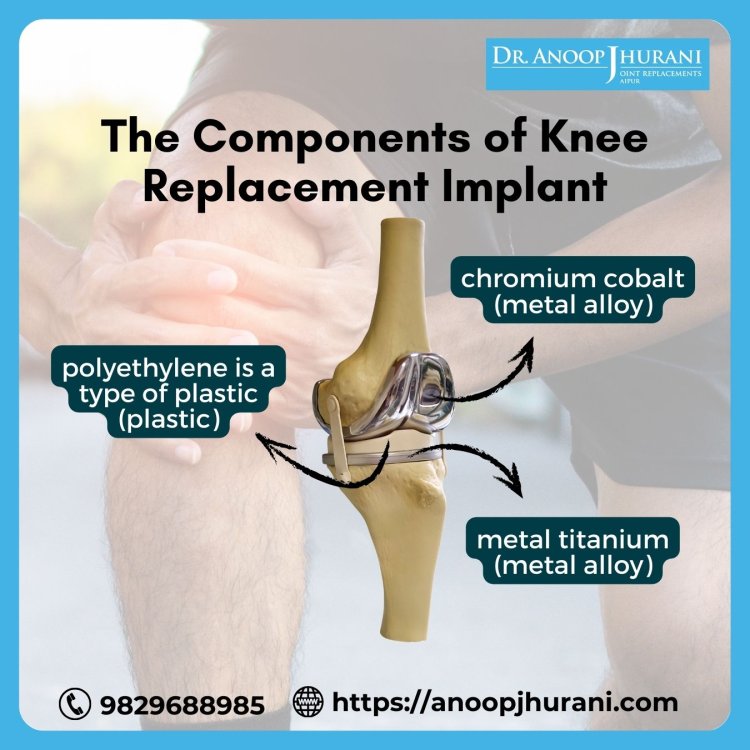The Components of Knee Replacement Implant
Dr. Anoop Jhurani performs Knee & Hip replacement surgeries in Jaipur, India. Book appointment & inquiries, contact us at +91 9829019985
Share this Post to earn Money ( Upto ₹100 per 1000 Views )

Knee replacement surgery has become a transformative solution for individuals grappling with chronic knee pain and limited mobility. At the heart of this procedure lies a sophisticated array of implant components, meticulously designed to restore functionality and alleviate discomfort. The key materials that constitute knee replacement implants, shed light on the precision and innovation driving this medical advancement.
1. Metal Components: The major implant components, such as the femoral and tibial components, are predominantly crafted from metal. Titanium and chrome-cobalt alloys are commonly used for their durability and compatibility with the human body. These metals serve as the foundation for the structural integrity of the implant, providing essential support for the weight-bearing functions of the knee.
2. Osseointegration and Cementation: Implants are secured in place through two primary methods: cementation and osseointegration. In osseointegration, a porous metal stem extends into the tibia, allowing the patient's natural bone to grow into it over time. Cementation involves using medical-grade cement to affix the implant securely to the bone. Both methods contribute to the stability and longevity of the implant.
3. Plastic Platform or Spacer: Situated between the tibial and femoral implant surfaces, a crucial element known as the plastic platform or spacer plays a pivotal role. This component is crafted from polyethylene, a durable and wear-resistant plastic. The spacer facilitates smooth articulation between the femoral and tibial components, ensuring optimal joint movement and minimizing friction.
4. Femoral Components: The femoral component, responsible for replacing the end of the thigh bone, is typically made from metal alloys. Common materials include cobalt-chromium alloys and metal-ceramic alloys, with oxidized zirconium emerging as a notable alternative. These materials are chosen for their strength, stability, and compatibility with the surrounding tissues.
5. Patellar and Tibial Components: The patellar component, responsible for covering the knee cap, is predominantly composed of polyethylene, a type of plastic known for its durability and low friction properties. Similarly, the tibial component, which replaces the top surface of the shin bone, can be crafted from chromium cobalt or titanium alloys for the metal tray, while the plastic spacer remains polyethylene.
Conclusion:
The components of knee replacement implants represent a harmonious blend of cutting-edge materials, engineering precision, and a commitment to restoring optimal joint function. As medical science continues to advance, these materials are refined to enhance durability, reduce wear, and improve overall patient outcomes. With a deeper understanding of the intricate components involved, individuals considering knee replacement surgery can approach the procedure with confidence, knowing that the amalgamation of metal and plastic is working in concert to usher in a new era of pain-free mobility.










